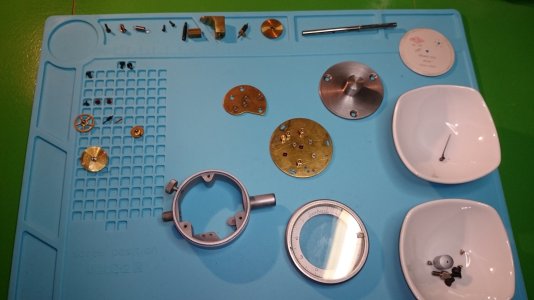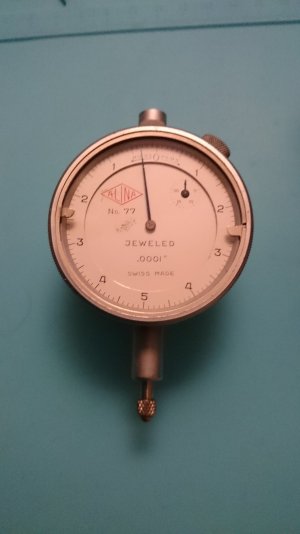trlvn
Ultra Member
Since Blondihacks posted her video on Repairing Dial Indicators, I've cleaned and lubed a couple of really old ones in my possession.
Repairing Dial Indicators - Diagnosing, Fixing, and How They Work!
Among my auction haul from a couple of days ago was a kind of nifty back plunge Ames. As you can see, it was in need of a bit of TLC:

The plunger would barely move; I had to pull on the anvil to get it to come back out. I figured I had absolutely nothing to lose so I completely disassembled it:

I didn't have the proper tool to remove the needle from the stem so I just pulled carefully with a small pair of pliers. To clean it, I swabbed with rubbing alcohol on Q-tips and a pipe cleaner. The plastic 'cystal', outer dial ring and the main case body, I washed with warm water, hand soap and a nail brush. Some of the internal parts were caked with old oil and crud but the alcohol seemed eventually loosen the mess.
After a couple of false starts and some head-scratching, I figured out which way the gears had to be oriented so that it had a full range of travel after reassembly. I think it looks a bit better now:

Better yet, the action is smooth and quick! I'm not sure where I'll actually use this but at least it is ready for service again.
Craig
Repairing Dial Indicators - Diagnosing, Fixing, and How They Work!
Among my auction haul from a couple of days ago was a kind of nifty back plunge Ames. As you can see, it was in need of a bit of TLC:
The plunger would barely move; I had to pull on the anvil to get it to come back out. I figured I had absolutely nothing to lose so I completely disassembled it:
I didn't have the proper tool to remove the needle from the stem so I just pulled carefully with a small pair of pliers. To clean it, I swabbed with rubbing alcohol on Q-tips and a pipe cleaner. The plastic 'cystal', outer dial ring and the main case body, I washed with warm water, hand soap and a nail brush. Some of the internal parts were caked with old oil and crud but the alcohol seemed eventually loosen the mess.
After a couple of false starts and some head-scratching, I figured out which way the gears had to be oriented so that it had a full range of travel after reassembly. I think it looks a bit better now:
Better yet, the action is smooth and quick! I'm not sure where I'll actually use this but at least it is ready for service again.
Craig






